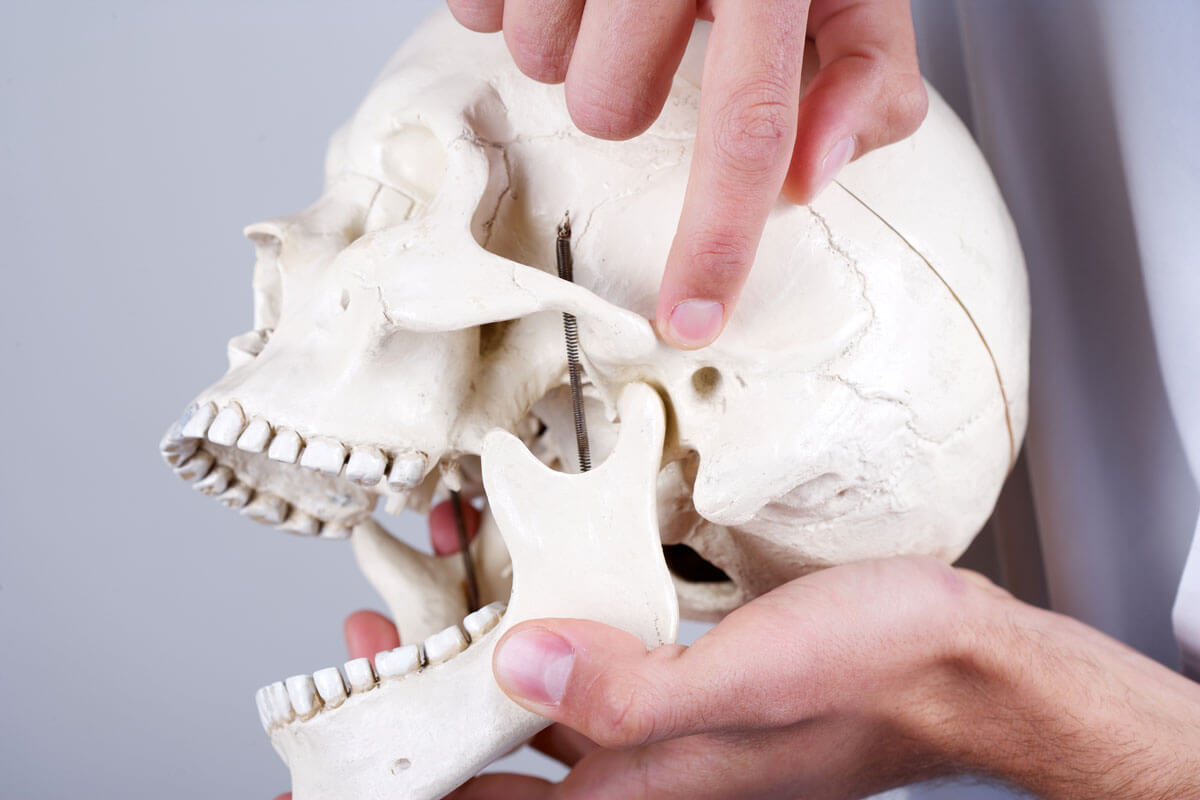TMJ Treatment

508 Dentist provides TMJ Treatment in North Attleborough & Swansea, MA. Call 508-336-8478 to learn more and schedule an appointment.
What is TMD?
The temporomandibular joint (TMJ) is the point where the jaw connects to the temporal bones of the skull, located in front of the ears. This joint is responsible for facilitating the up-and-down, as well as side-to-side, movement of the jaw when a person talks, chews or yawns. When this joint fails to work correctly, a patient is diagnosed with a Temporomandibular Joint Dysfunction, or TMD for short.
The are multiple reasons a patient can experience TMD. These include an injury to the face and jaw, bruxism (grinding and clenching of the teeth), displacement of the disc between the ball and socket of the joint, stress, or arthritis.
Symptoms of TMD facial pain include tenderness around the jaw joint area, neck, or shoulders, that is exacerbated when speaking or eating. The patient may experience a limited range of motion in the jaw, or a feeling of it being stuck or locked in position, making it difficult to talk or chew. A clicking or popping sound may also be heard when the jaw is opening and closing. The face may feel fatigued or tired, and occasionally experience swelling. Toothaches, dizziness or a ringing in the ears has also been reported.
Managing TMD
Most TMJ problems are temporary and can be alleviated with simple self-care techniques. For example, when experiencing discomfort, stick to eating soft foods and applying ice packs. Minimize jaw movements by not talking too much, and avoid extreme movements like wide yawning, loud singing or chewing gum. Gentle stretching and relaxation techniques can also be utilized, as well as limiting stress and anxiety. Short term use of over-the-counter pain relief and anti-inflammatory medications may also help.
Using BOTOX® to Treat TMD
If the facial pain from TMD does not subside, becomes frequent or more severe, one option to discuss with our medical team at 508-Dentist is the use of BOTOX® as a treatment for chronic TMD.
BOTOX® has been used for years around the world, by millions of patients, as a remedy for facial lines and wrinkles. It is derived from the bacterium, Clostridium botulinum, and contains a refined botulinum toxin protein. BOTOX® works by targeting the muscles underneath the surface layers of the skin and temporarily reducing their activity.
When injected into the chewing muscles, the masseter and temporalis, BOTOX® causes a partial paralysis that relaxes them, thus reducing the stress on the Temporomandibular joint. The forced relaxation of these muscles has been shown to ease the facial pain and discomfort patients experience. Patients have also reported decreased levels of tenderness and an improvement in their jaw function and ability to open and close the mouth.
It is important to remember that these BOTOX® treatments are addressing the symptoms of TMD. They will not cure TMD.
The Procedure
Similar to all of our facial esthetic treatment options, BOTOX® injections for the treatment of TMD are performed in our office by our American Academy of Facial Esthetics (AAFE) trained medical practitioners. During your consultation before the procedure, please make sure to advise us of all medical issues, including current illnesses, recent or planned surgeries, all medications (including over-the-counter drugs like NSAIDS and aspirins), and any allergies.
The entirety of the procedure is not time-consuming, and typically takes as long as an average teeth cleaning. The first step is to clean and prep the jaw and neck areas that are to be treated; and then the area may be slightly numbed with either ice or a local anesthetic. The medication is then injected into the skin with a fine needle. The number of injections will vary based on the extent of the treatment. In some cases, results can be felt immediately; but it is not uncommon for the full effect to set in over time.
During and after the injections, patients may experience some mild discomfort. Redness, swelling and even minor bruising may occur, but usually subside quickly. Once the procedure is finished, you may return to normal everyday activities. There is no down time required.
In the days and weeks following the injections, patients will need to adjust to the new muscle use and sensations. Severe TMD sufferers must retrain themselves against the muscle memory of holding that tension in their jaw. Focusing on allowing the muscles to stay relaxed will enable the treatment to have a longer-lasting effect.
Don’t let the pain and aggravation of TMD continue to negatively impact your health and happiness. Our patients are already finding relief using BOTOX® as a TMD treatment. Contact us at 508-336-8478 to schedule a consultation. BOTOX® may be the solution to TMD facial pain that you’ve been waiting to find.
